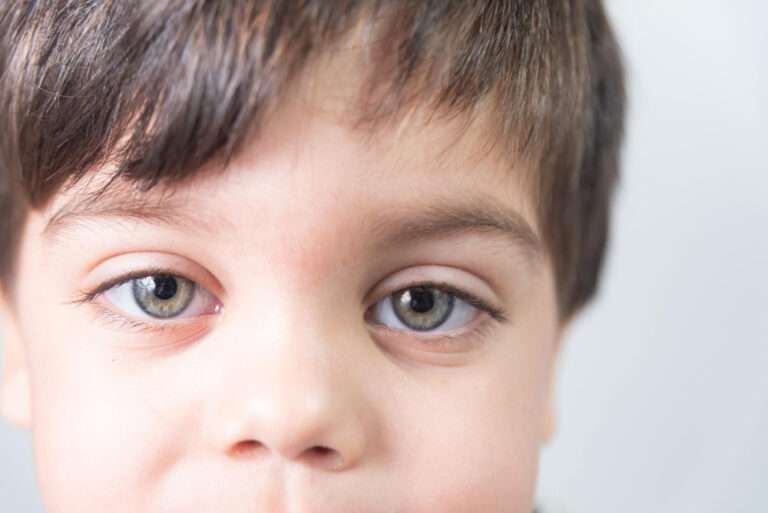Strabismus in children
Strabismus, often referred to as “crossed eyes,” is a common eye condition in children where the eyes do not align properly and point in different directions. It can occur in one or both eyes and may be constant or intermittent. Strabismus can manifest in various forms, including esotropia (inward deviation of an eye), exotropia (outward deviation of an eye), hypertropia (upward deviation of an eye), or hypotropia (downward deviation of an eye). Here are some key points about strabismus in children:
Causes of Strabismus:
- Muscle Imbalance: Strabismus is often caused by an imbalance in the muscles that control eye movement. When these muscles do not work together correctly, one eye may drift or turn in a different direction.
- Amblyopia: Strabismus can lead to amblyopia (lazy eye) if not treated promptly. The brain may suppress the image from the misaligned eye, leading to reduced visual acuity in that eye.
- Heredity: A family history of strabismus can increase the risk of a child developing the condition.
- Refractive Errors: Significant differences in refractive errors (e.g., nearsightedness, farsightedness, or astigmatism) between the two eyes can contribute to strabismus.
- Neurological Conditions: In some cases, neurological conditions or eye disorders can lead to strabismus.
Symptoms:
- The most noticeable symptom of strabismus is the misalignment of one or both eyes.
- Children with strabismus may experience double vision, especially when the misalignment is intermittent.
- Squinting, tilting of the head, or closing one eye to see better are common coping mechanisms.
- Reduced depth perception (ability to perceive depth and 3D vision) is often a result of strabismus.
Diagnosis:
Strabismus is typically diagnosed through a comprehensive eye examination by an optometrist or ophthalmologist. The eye care provider will assess eye alignment, visual acuity, and the refractive status of both eyes. Special tests, such as the cover-uncover test and the alternate cover test, may be used to detect misalignment and assess the severity of strabismus.
Treatment:
Treatment for strabismus in children aims to achieve proper eye alignment and improve visual function. Treatment options may include:
- Eyeglasses or Contact Lenses: Corrective lenses may be prescribed to address refractive errors and help reduce strabismus in some cases.
- Vision Therapy: Vision therapy involves a series of eye exercises and activities designed to improve eye coordination, strengthen eye muscles, and enhance visual processing skills.
- Prism Lenses: Prism lenses can be incorporated into eyeglasses to help align the eyes temporarily by redirecting light.
- Eye Patching: Patching the stronger eye for a specified number of hours each day can encourage the use of the weaker eye and may be used in conjunction with other treatments.
- Botox Injections: In some cases of strabismus, particularly in adults, Botox injections may be used to temporarily weaken or relax specific eye muscles to achieve better alignment.
- Surgery: Eye muscle surgery may be recommended to correct strabismus that does not respond to other treatments. During surgery, the eye muscles are adjusted to achieve proper alignment.
The choice of treatment depends on the type and severity of strabismus, the child’s age, and other individual factors. Early diagnosis and treatment are important to prevent the development of amblyopia and to improve the child’s overall visual function and quality of life. Regular follow-up appointments with an eye care specialist are essential to monitor progress and ensure the success of treatment.
------------From our Sponsors------------









